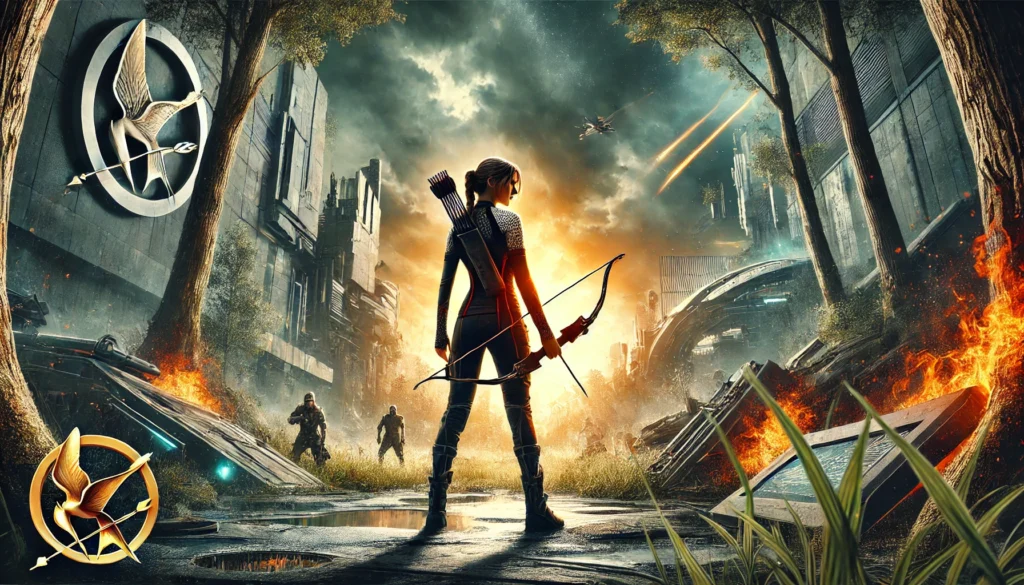“The Hunger Games Mockingjay Part 2” marks the dramatic conclusion of the cinematic adaptation of Suzanne Collins’ critically acclaimed series. This final installment brings a thrilling end to Katniss Everdeen’s quest for justice and freedom against the oppressive Capitol. This article delves into the themes, character arcs, and significant plot points of the movie, examining its impact on audiences and its place within the broader context of dystopian cinema.
Table of Contents
ToggleOverview of Hunger Games Mockingjay Part 2
Released in 2015, “Hunger Games Mockingjay Part 2” picks up right where “Part 1” left off, with Katniss recovering from a traumatic attack and the rebels of District 13 preparing for an all-out assault on the Capitol. As the war escalates into its most ferocious stage, Katniss must confront President Snow and contend with internal betrayals and moral dilemmas that challenge her views on justice and revenge.
Key Themes and Development
- War and Its Consequences: A central theme of “Hunger Games Mockingjay Part 2” is the harsh realities of war. The film does not shy away from the complexities and brutalities of conflict, depicting the physical and psychological toll on all involved.
- Authority and Rebellion: Continuing the series’ exploration of authoritarianism versus dissent, this final chapter portrays the climax of the rebellion, focusing on the costs of overthrowing a tyrannical regime and the sacrifices required to establish a new order.
- Moral Ambiguity: The movie explores the grey areas of morality in war. Katniss faces difficult choices that blur the lines between right and wrong, challenging the audience to think critically about justice and vengeance.
Major Plot Points
- The Capitol’s Last Stand: The film features intense scenes of urban warfare as Katniss and her allies make their final push toward President Snow’s stronghold. The Capitol, booby-trapped with deadly “pods,” creates a tense and hazardous battlefield.
- The Assassination of President Snow: One of the most pivotal scenes is Katniss’s decision to kill President Coin instead of Snow during the execution ceremony, highlighting her realization that replacing one tyrant with another is not true victory.
- Epilogue: “Mockingjay Part 2” concludes with an epilogue that shows Katniss and Peeta living a peaceful life post-rebellion, suggesting a hopeful future after the turmoil of war.
Character Arcs
- Katniss Everdeen: Jennifer Lawrence’s portrayal of Katniss reaches its zenith as she navigates the final stages of her transformation from a reluctant hero to a symbol of the revolution. Her journey is marked by personal loss, growth, and the quest for peace.
- Peeta Mellark: Peeta’s struggle with his brainwashing serves as a poignant subplot, exploring themes of identity and recovery. His reunion and eventual reconciliation with Katniss provide a touching resolution to his character’s turmoil.
- President Snow and Coin: The contrasting leadership styles of Snow and Coin illustrate the dangers of absolute power, serving as a cautionary tale about the corrupting influence of unchecked authority.
Reception and Impact
“Hunger Games Mockingjay Part 2” received mixed to positive reviews from critics and was a box office success. While praised for its intense action sequences and strong performances, some criticized it for its pacing and the division of the last book into two parts. Nevertheless, the film has been celebrated for its thought-provoking narrative and its relevance to contemporary global issues.
Conclusion: Hunger Games Mockingjay Part 2
“The Hunger Games: Mockingjay Part 2” not only concludes Katniss Everdeen’s story but also cements the series’ legacy as a significant work in the genre of dystopian fiction. It challenges viewers to consider the cost of war, the complexities of leadership, and the enduring human spirit. As the final note in a saga that has captured the imaginations of millions, “Hunger Games Mockingjay Part 2” offers a compelling exploration of resistance, sacrifice, and the quest for justice.

